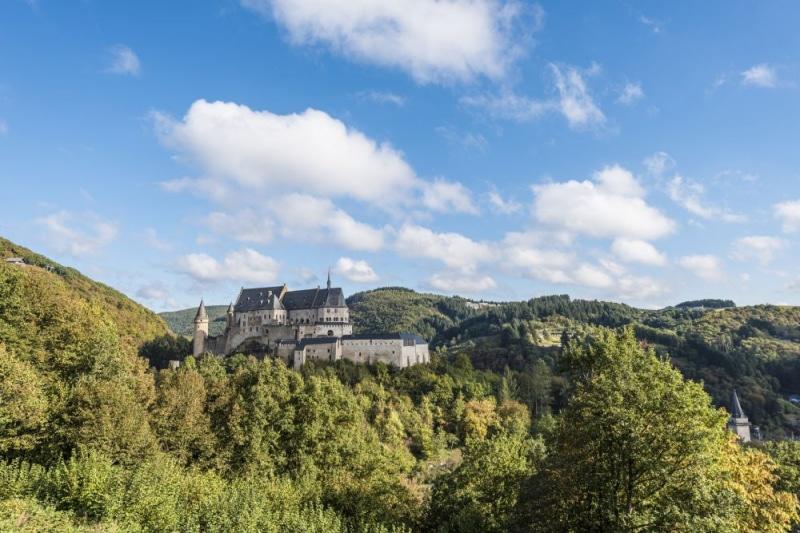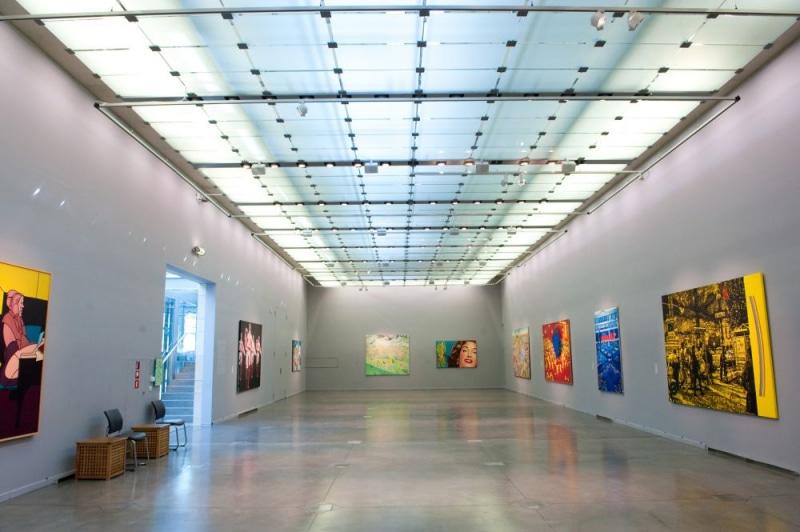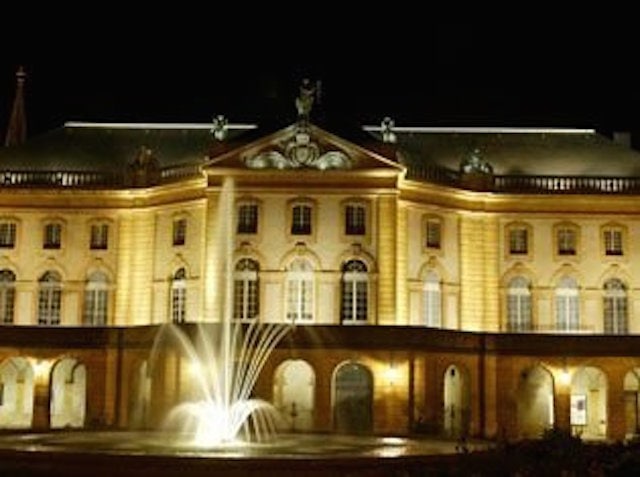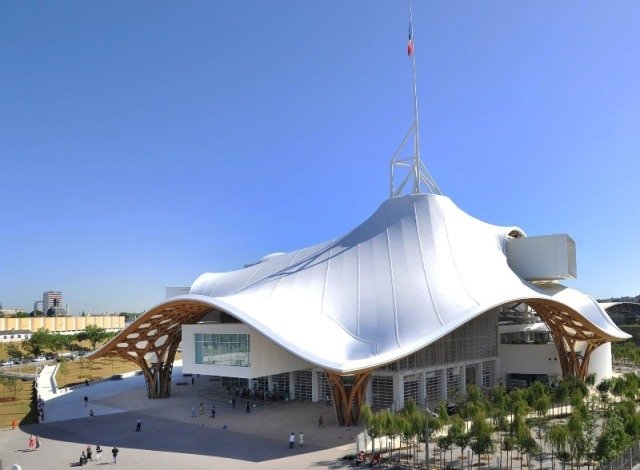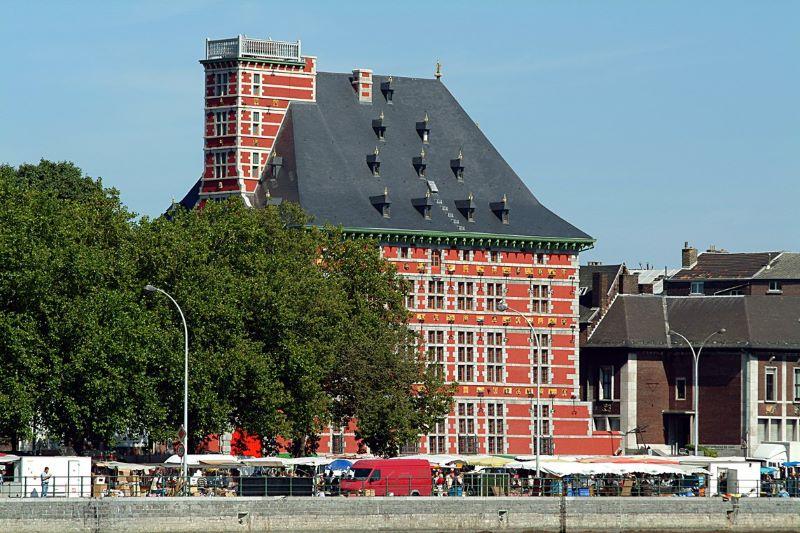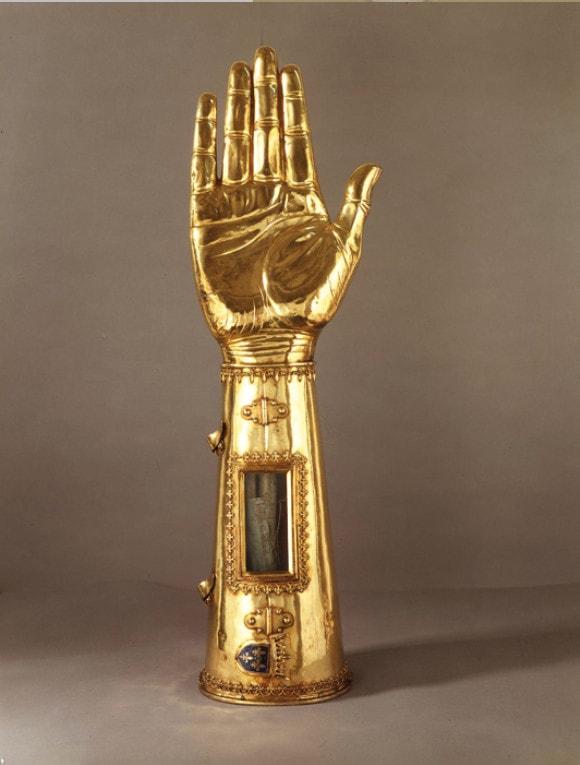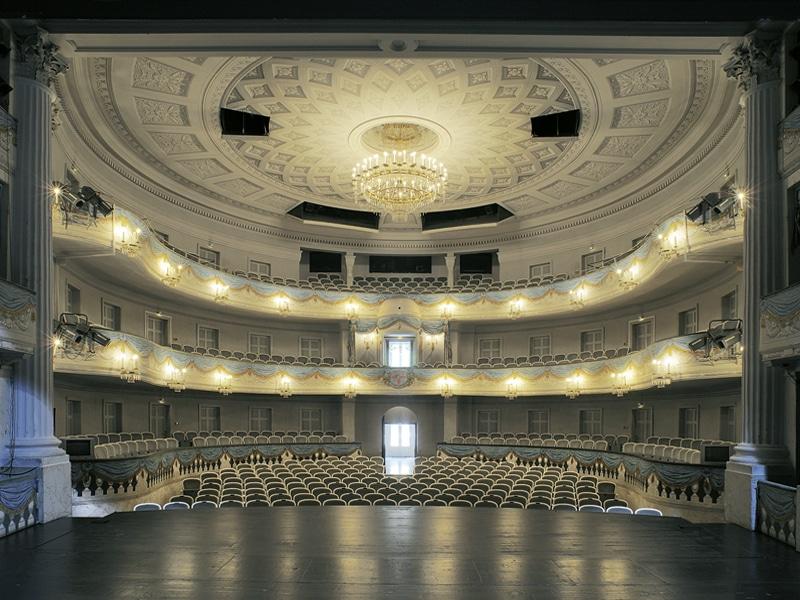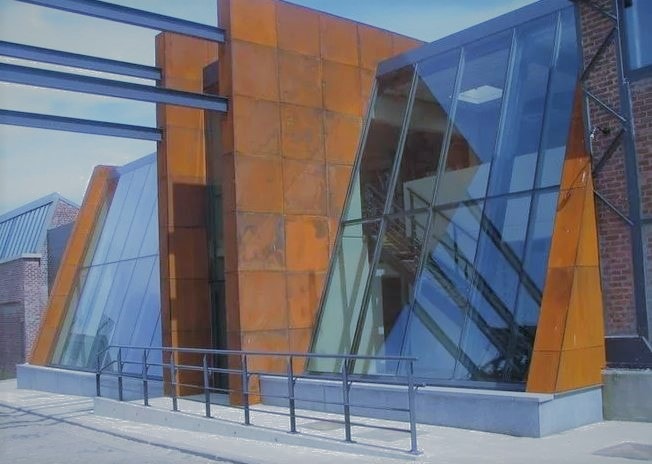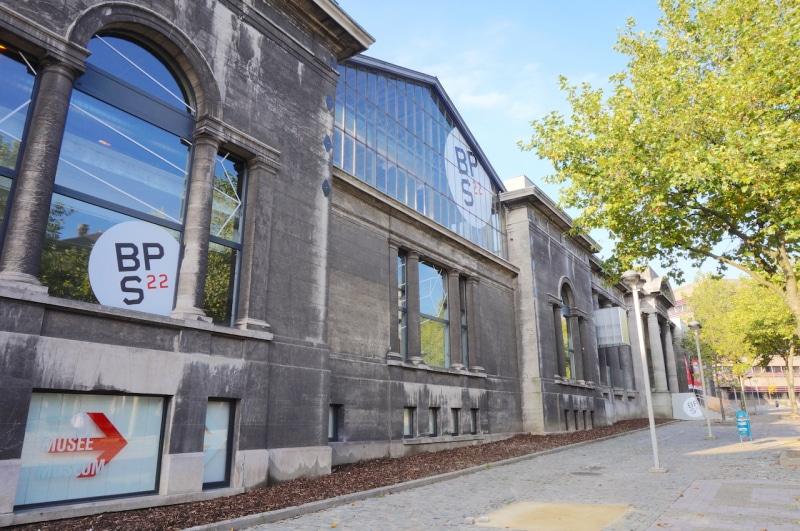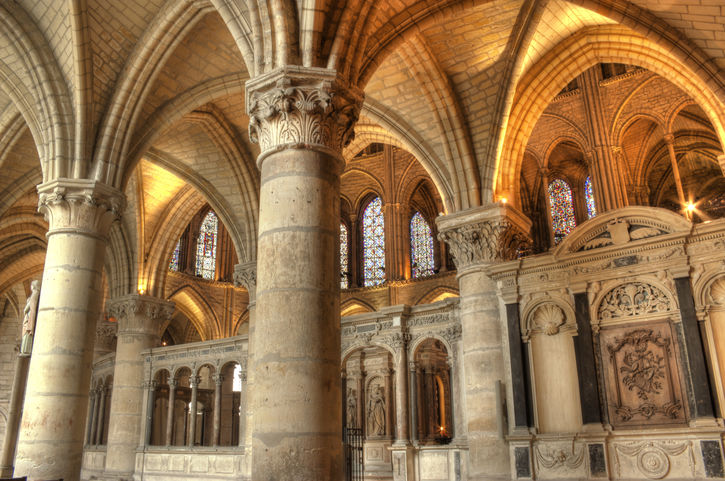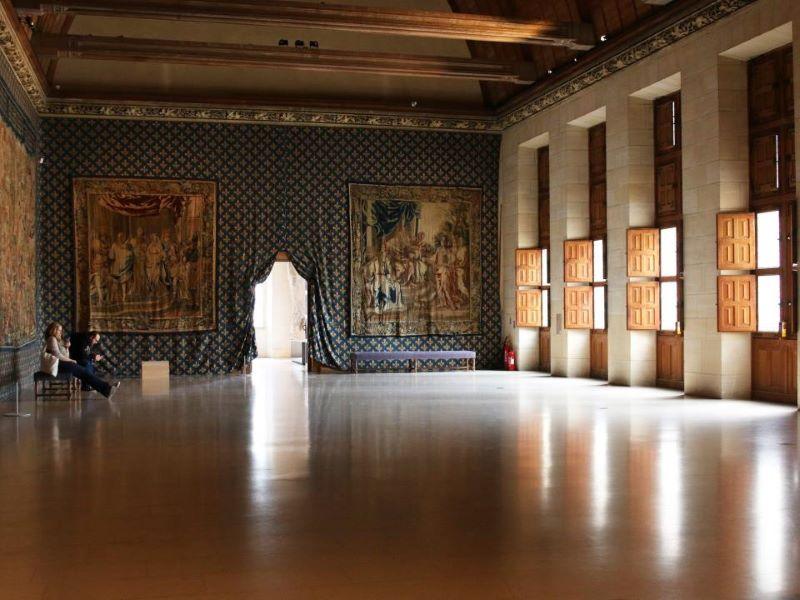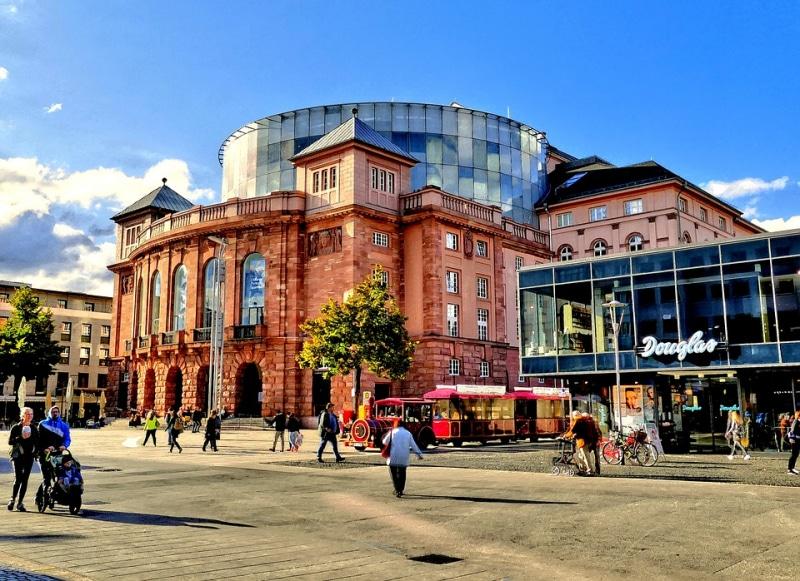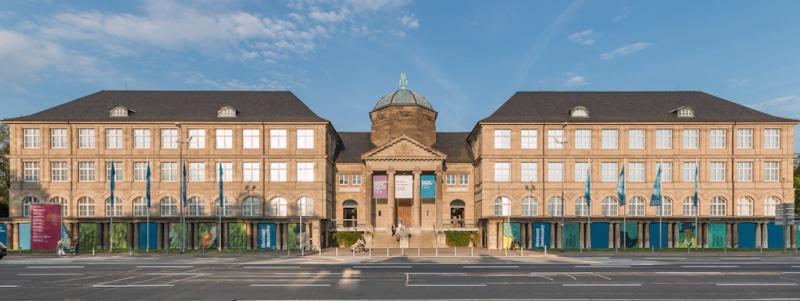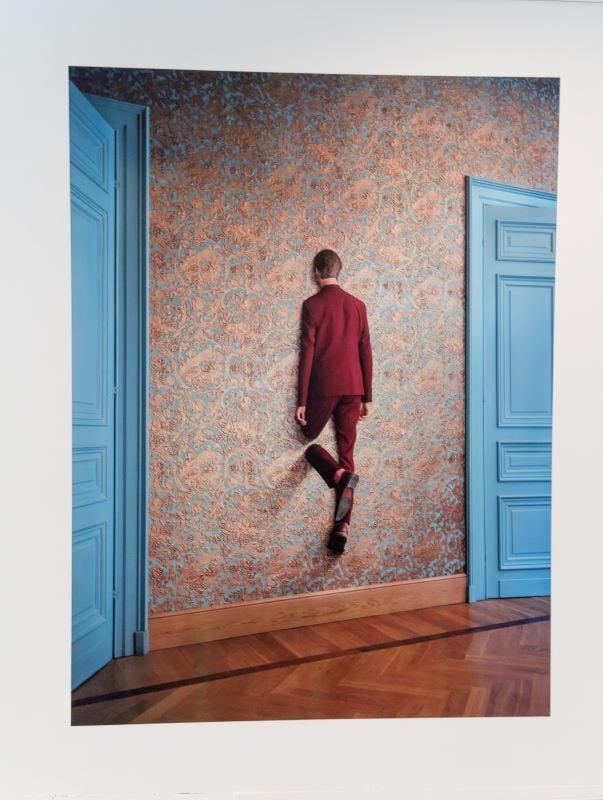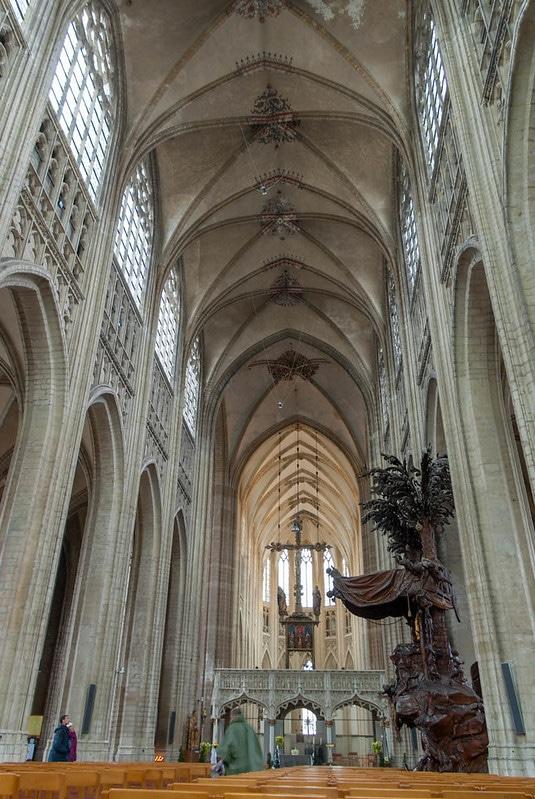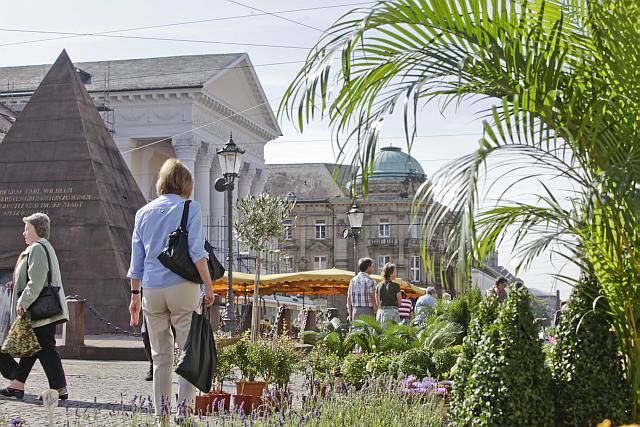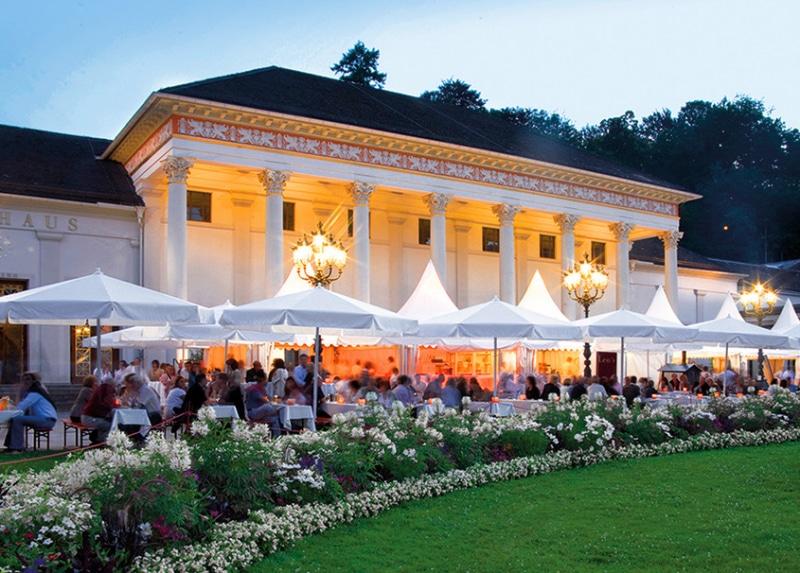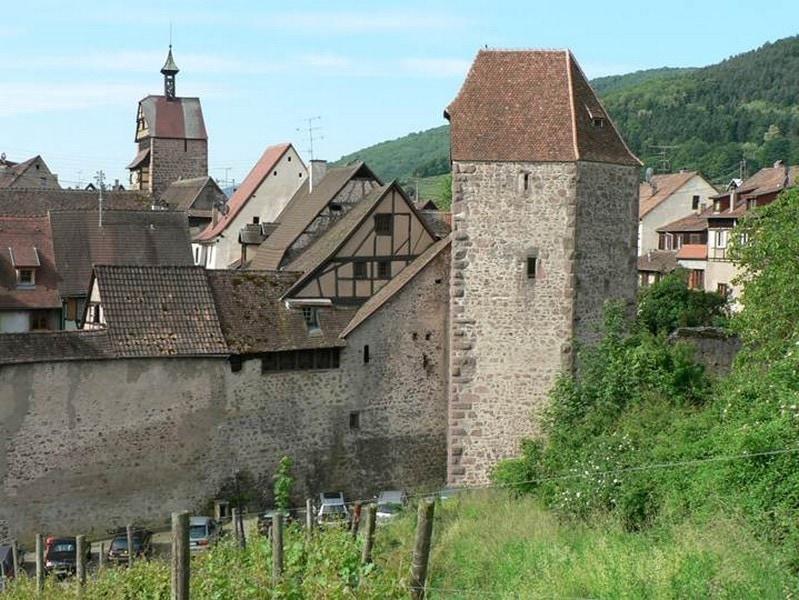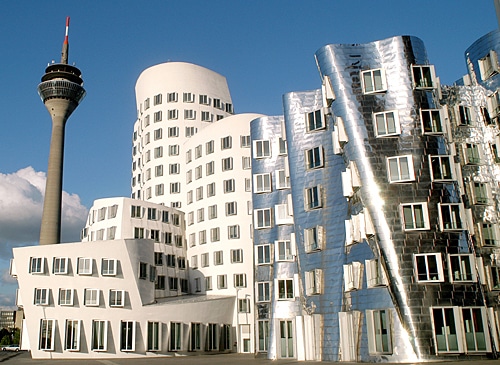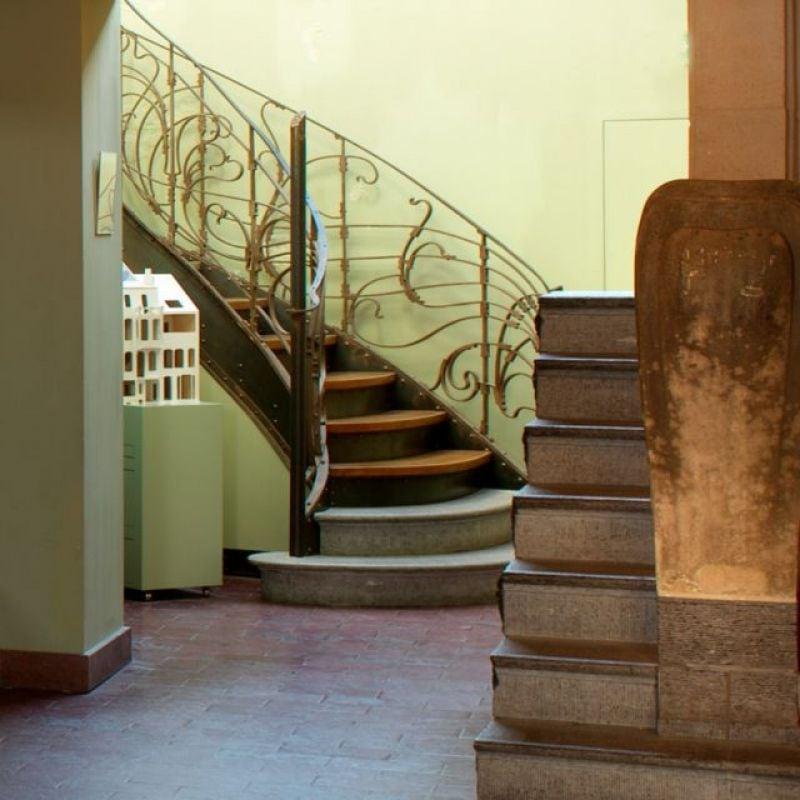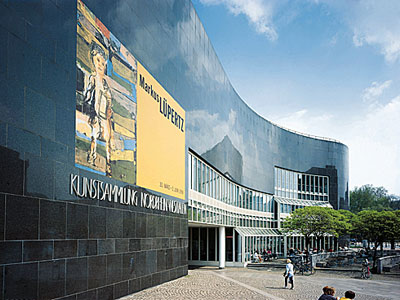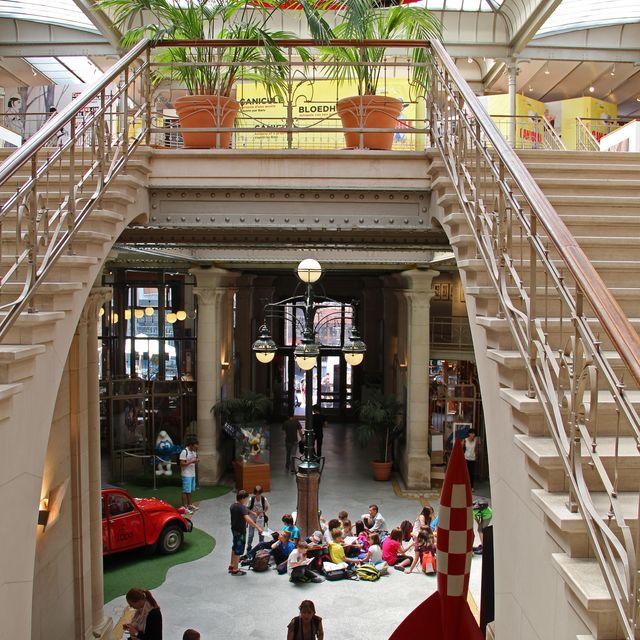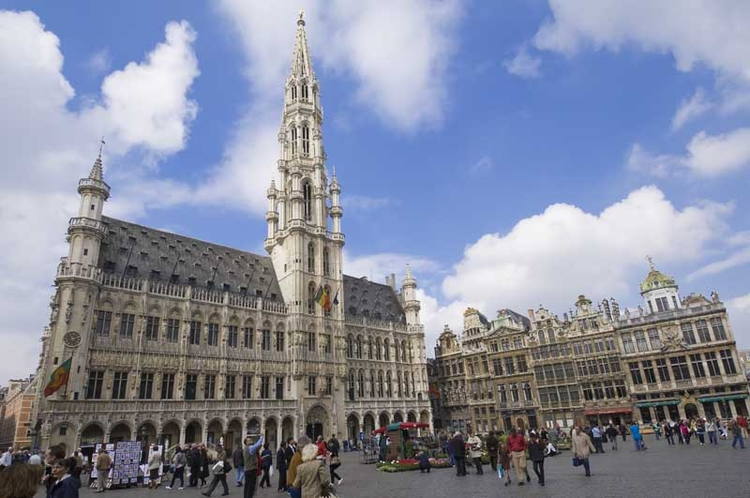ArtandCulture, Luxembourg
Removed from Unnamed collection
Castle of Vianden
Vianden Castle was built between the 11th and 14th Century on the foundations of a Roman castle and a Carolingian refuge. This Castle-Palace bears the Hohenstaufen characteristics and is one of the largest and finest feudal residences of the Roman and Gothic eras in Europe.
Until the early 15th Century it was home to the powerful Counts of Vianden who could boast of their close connections to the German Imperial Court. The greatest of them, Count Henry I (1220 -1250) was even married to a member of the Capetian family, which ruled France at the time. In 1417, the castle and its lands were inherited by the younger line of the German House of Nassau, which -in 1530- also acquired the French principality of Orange. The castle's most remarkable rooms; the chapel as well as the small and the grand palaces were built in the late 12th and the first half of the 13th Century.
In 1890 the castle became the property of Grand Duke Adolphe of the elder line of Nassau and remained in the hands of the Grand Ducal family until 1977 when it was transferred into state ownership. It has been painstakingly restored to its former glory and today ranks among the most significant historical monuments of Europe. https://www.visitluxembourg.com/en/place/castle/vianden-castle
Map
Removed from Unnamed collection
Grand Ducal Palace
As the town residence of the Grand Duke, the grand-ducal palace has unquestionably one of the most beautiful façades in the city (Flemish Renaissance, 16th century). Majestical interior and splendid above stairs (with light design by Ingo Maurer) can be visited exclusively during summer. https://www.visitluxembourg.com/en/place/castle/palace-of-the-grand-dukes
Map
Removed from Unnamed collection
National Museum of History and Art
National Museum of History and Art, archeological section. The museum has a large archaeological collection, particularly of objects discovered during the various excavations: sarcophaguses, tools, coins, jewels, grave markers, etc. the most outstanding objects being found in the excavations at Dalheim (Ricciacus) and Titelberg. The visual arts section of this museum in the capital offers the possibility of admiring a wide range of Luxembourgish painting from the 18th to the 20th century, including the post-impressionist watercolours of Sosthène Weis, paintings by Joseph Kutter, Dominique Lang, Eugène Mousset, Jean-Pierre Beckius, Nico Klopp and Auguste Trémont as well as sculptures by Auguste Trémont and Lucien Wercollier. While the museum also houses ancient sculptures and paintings (including a Charity attributed to Cranach), it also has a collection of contemporary art of undeniable originality. https://www.visitluxembourg.com/en/place/museum/national-museum-of-history-and-art-luxembourg
Map
Explore more places related to this search:
Removed from Unnamed collection
Porta Nigra
For the newly arrived guest, the Porta Nigra is the best place to begin a tour of Trier. The gate dates back to a time (about A.D. 180) when the Romans often erected public buildings of huge stone blocks (here, the biggest weigh up to six metric tons). http://www.trier-info.de/english/porta-nigra-info
Map
Removed from Unnamed collection
Opera Theatre Of Metz Metropole
Construction of the theatre began in 1738 but work was delayed by a number of problems (war, embezzlement etc.). The first theatrical performance only took place 14 years later. However, it is the oldest theatre still in use in France today. http://www.tourisme-metz.com/en/sites-and-monuments/opera-theatre-de-metz-metropole-1_s.html#.Wieaw7T1UWo
Map
Removed from Unnamed collection
Centre Pompidou-Metz and museums
The first decentralized satellite of a French museum, the Centre Pompidou-Metz is a masterpiece of contemporary architecture. Conceptualized by the architects Shigeru Ban and Jean de Gastines, with Philip Gumuchdjian, who also designed the prizewinning project, there are three exhibition spaces covered by an audacious roof inspired by a Chinese hat. http://www.tourisme-metz.com/en/centre-pompidou-metz-et-musees/centre-pompidou-metz_s.html#.WieZ3bT1UWo
Map
Removed from Unnamed collection
The Grand Curtius
Discovering 7000 years of art and history!
What is the Grand Curtius Museum? This museum contains more than 7000 years of regional and international artefacts and more than 5200 items displayed in chronological or thematic order. You also can find prestigious collections from the archaeology, decorative arts, religious art and Mosan arts, as well as the weaponry and glass.
The Grand Curtius located in the historical heart of the Ardent City, the Grand Curtius offers a fresh perspective of the city, houses gardens and a cafeteria that are open all year round. https://www.visitezliege.be/en/le-grand-curtius
Map
Removed from Unnamed collection
Ansembourg Museum
This private mansion, built in approximately 1740 for a banker, pays witness, through its architectural features and decorative arts that are typical of Liège, to the sophisticated lifestyle of this era. Art objects are on display, whilst furniture from Liège and the rest of Europe depict what the interiors of the time would have resembled. The Ansembourg Museum also proposes exhibitions throughout the year which promote one aspect or another of the collections from Liège's museums.
For the Ansembourg Museum, this beautiful mansion built around 1740, the first phase of restoration will soon begin. In 1903, the city of Liège acquired the building, which in 1905 became its museum of archaeology and decorative arts. https://www.liege.be/en/discover/culture/museums/ansembourg-museum
Map
Removed from Unnamed collection
Aachen Cathedral Treasury
Charlemagne's palace, the era of coronations and the tradition of pilgrimages have produced an unique and magnificent church treasure whose most famous pieces are on show today in the Cathedral Treasury. The oldest piece is a Roman sarcophagus which portrays a scene from ancient mythology, and in which Charlemagne was initially buried. From Charlemagne's palatine school in Aachen comes a book cover carved from ivory and showing scenes from the story of Christ's resurrection. According to medieval legend, several other pieces of the Cathedral treasure belonged to Charlemagne himself, one of them a hunting horn fashioned from the tusk of an elephant. http://www.route-charlemagne.eu/Stationen/Dom/Domschatzkammer/index.html?lang=EN
Map
Removed from Unnamed collection
The Koblenz Theatre
Located not far from the Electoral Palace, the Koblenz Theatre is one of the only surviving examples of classical theatre construction on the Middle Rhine, and is the earliest example of a gallery theatre in Germany (as opposed to the earlier box theatre). http://www.koblenz-tourism.com/culture/koblenz-attractions/koblenz-theatre.html
Map
Removed from Unnamed collection
The Electoral Palace
The Electoral Palace in Koblenz is one of the most important palatial buildings in the French early Classicism style in south-western Germany, and is one of the last residential palaces that was built in Germany shortly before the French revolution. http://www.koblenz-tourism.com/culture/koblenz-attractions/electoral-palace.html
Map
Removed from Unnamed collection
Glass Museum of Charleroi
The Glass Museum, at the Bois du Cazier in Marcinelle, retraces five thousand years of art, history and technology.
The collections are presented from an innovative angle: a backwards chronology invites the visitor on a completely new voyage, from the present day to the origins of glass.
Also available Glass-blowing demonstrations with a blowtorch in the workshop.
Guided tours can be arranged in Dutch, English, French or Italian. Booking required. https://walloniabelgiumtourism.co.uk/en-gb/content/glass-museum-bois-du-cazier
Map
Removed from Unnamed collection
BPS22 Art Museum
The BPS22, the Hainaut Province's Museum of Art in Charleroi, is an exhibition space especially dedicated to art forms focusing on current social issues. The museum's programme gives prominent space to international artists that deal with greater global issues, such as Kendell Geers, Jota Castro, mounir fatmi and Wang Du, as well as cultural phenomena characteristic of our time, such as the world of media and urban subcultures like punk or graffiti, for instance.
With a wealth of over 7000 works of art, dating from the end of the 19st century to the present time, and including paintings to videos and performance, as well as installations and tapestries and a large archive collection, the Hainaut Province Collection is stored at the BPS22. http://www.bps22.be/en/
Map
Removed from Unnamed collection
Museum of Photography Charleroi
With 80,000 photographs in its collection (800 of which are permanently on the show), Charleroi's Museum of Photography is considered the most important of its kind in Europe.
Over 13,000 titles and 4,000 files dedicated to photography are accessible to the public in the museum's library. The museum shop features the publications, photography works, gadgets and ideas for gifts and decoration.
Go for a stroll in the museum's park: 85 ha featuring protected trees. Perfect to conclude your visit and reflect on the gems you have just seen! https://walloniabelgiumtourism.co.uk/en-gb/content/museum-photography-charleroi
Map
Removed from Unnamed collection
Saint-Remi Basilique
Listed as a UNESCO World Heritage Site, Saint-Remi Basilica is a collection of history and art which should not be missed. The 11th century Romanesque nave was lengthened by two transepts at the end of the 12th century to render it accessible to a greater number of pilgrims. At the same time, the facade was reconstructed, while a choir ambulatory and radiating chapels were created. While the Gothic style is apparent in these transformations, they in no way altered the homogeneity and serenity of the church. It contains Saint Remi's tomb, a collection of 12th century stain-glass windows and a Cattiaux grand organ, inaugurated in the year 2000. https://www.reims-tourism.com/basilique-saint-remi/reims/pcu0000000000733
Map
Removed from Unnamed collection
Palace of Tau
Transformed at the end of the 17th century by Jules Hardouin-Mansart and Robert de Cotte, the Palace of Tau still holds rooms that have retained their medieval aspect. This is the case with the Palatine Chapel (13th century) and the Tau Room, in which the coronation banquet was held. Decorating the walls are 15th century tapestries which tell the story of "Mighty King Clovis".
The royal treasury's most remarkable objects are Charlemagne's talisman (9th century) and Saint Remi's chalice (12th century). The Sainte-Ampoule, or "holy flask", contains the holy oil with which new kings were anointed during the coronation ceremony. https://www.reims-tourism.com/palais-du-tau/reims/pcu0000000000855
Map
Removed from Unnamed collection
State Theater
In the center of Mainz stands the state theater built between 1829 and 1833. At the Gutenbergplatz the big house as well as the glasshouse high under the roof are used. At the Tritonplatz next door is the small house built in 1997 and since 2014 deep underground the studio stage U17. https://www.mainz-tourismus.com/entdecken-erleben/kultur-erleben/theater-kabarett/staatstheater/
Map
Removed from Unnamed collection
Gutenberg Museum
Experience the history of printing, book and writing "live": In the centre of the old town of Mainz, opposite the cathedral, is one of the oldest book and printing museums in the world. The Gutenberg Museum, founded by citizens of Mainz in 1900, is dedicated to the “man of the millennium” Johannes Gutenberg and his inventions.
The museum's greatest treasures include two original Gutenberg Bibles from the mid-15th century. The reconstructed Gutenberg workshop is also one of the main attractions. Every day it is demonstrated every hour how printing was done in Gutenberg's time. A modern film introduces Gutenberg's life and work. With the audio guide (German, English, French) you can then go on a "listening tour" and get to know the highlights of the house in German, English and French. Five "extra tours" take you through individual departments.
In the Gutenberg Museum, you can see printing presses from many centuries and get comprehensive information about European and non-European printing technology, the book art of many centuries, the history of paper and writing, the history of the press and much more. Our special collections include commercial and ex-libris, graphics and posters, press prints (small publishers) and artist books, which you are welcome to view in the Gutenberg Library (advance registration). In changing special exhibitions, examples of historical and modern book and print art and typography are shown and the link is drawn to the 21st century. https://www.mainz-tourismus.com/entdecken-erleben/kultur-erleben/museen/gutenberg-museum/
Map
Removed from Unnamed collection
Museum Wiesbaden
The Museum Wiesbaden is one of three state museums in the State of Hesse. Lovers of art and nature as well as art fanciers with a passion for the expressionism cannot do without visiting the museum. It owns more than 100 works of the Russian painter Alexej von Jawlensky, which forms the most important Jawlensky collection in Europe. https://www.wiesbaden.de/en/culture/museum/museum-wiesbaden/index.php
Map
Removed from Unnamed collection
Kurhaus
The Wiesbaden Kurhaus is an event venue which has a rich history and also provides the modern equipment capable of transforming any convention, conference and social event into a special experience. https://www.wiesbaden.de/en/tourism/conventions/kurhaus/index.php#
Map
Removed from Unnamed collection
Jungbusch
Mannheim's lively Jungbusch district brings a real Berlin vibe to the city. Between its industrial romanticism and harbour scenery beats the creative heart of the city. With facilities like the Popakademie Baden-Wurttemberg, the Musikpark Mannheim or the creative business incubator C-HUB, it is a focal point for the city's many creative people. Jungbusch has evolved from its former life as a harbour to become a trendy district without losing its special charm. If you want to get to know the real Mannheim nightlife, head to Jungbusch. The cultural festival "Nachtwandel im Jungbusch" attracts visitors from right across the region. https://www.visit-mannheim.de/en/Media/attractions/jungbusch
Map
Removed from Unnamed collection
Gallery De Mijplaal
Gallery "De Mijplaal" is situated on the fine line different styles and arts. In this way, they prove, that because of between confrontation the borders between those styles fade away and that leaves room for very interesting dialogues to flourish.
Starting from the dialogue between what the old and new was and what is. De Mijlpaal wants to continue on its search for the interfaces between visual arts, photography, mode and design. Gallery De Mijpaal is a pioneer who tries to bring young artists together with the already renowned artists.
It's not the first rodeo for gallery De Mijlpaal on multiple occasions in the past, they already hosted a wide range of projects with international artists at unique locations situated in Belgium and abroad. https://www.myknokke-heist.be/en/galleries/kunstgalerij-de-mijlpaal
Knokke
Map
Removed from Unnamed collection
Multihalle Mannheim
Delicately curved and almost futuristic in appearance, the multi-purpose hall in Mannheim's Herzogenriedpark is the world's largest self-supporting wooden lattice-shell construction. It was designed in 1975 by the architect of the Munich Olympic Park, Frei Otto. At that time, the hall boasted the largest cantilevered dome in the world and quickly earned the nickname "Wonder of Mannheim". With its organic structure and material-minimised construction, it is famous in architectural circles way beyond German borders. Even for non-architects, however, the impressive hall is well worth a visit. https://www.visit-mannheim.de/en/Media/attractions/multihalle-im-herzogenriedpark
Map
Removed from Unnamed collection
M-Museum Leuven
The museum displays old and new art inspired by Leuven’s versatility. The collection is mainly focused on the art production in Leuven and Brabant from the Middle Ages to the 19th century. It includes Constantin Meunier, Jef Lambeaux and Georges Minne.
In addition to the permanent collection, M also presents temporary exhibitions of both old masters and contemporary artists. Discover the personalised offer for groups and families.
The impressive architecture deserves special attention. Designed by Belgian top architect Stéphane Beel, the complex integrates historical buildings and contemporary architecture. Don’t miss the enclosed garden and roof terrace. http://www.visitleuven.be/en/m-museum-leuven
Map
Removed from Unnamed collection
Leuven Town Hall
The town hall is Leuven's pride and joy. Moreover, it's one of the best-known Gothic town halls worldwide. It took three architects and thirty years to build it. Leuven's 'Hall of Fame' features 236 statues, which were only added to the façade after 1850.
These days the town hall merely has a ceremonial function after the city's administrative services moved in 2009. The tourist information center is situated on the side of the town hall.
Also daily guided tours are available. The guide will tell you about the construction history of this Gothic gem. You will discover the story behind the 236 sculptures on the façade. Afterwards, you can visit the foyer, the reception rooms, the large and small Gothic Hall, the wedding hall and the council hall.
Every third Saturday of the month you can visit the cellars under the town hall. These cellars have housed the ‘Jaartallen’ collection since the very first edition in 1890. The entrance is located at Grote Markt square next to the town hall’s flight of step. http://www.visitleuven.be/en/town-hall
Map
Removed from Unnamed collection
Saint Peter's Church
Saint Peter’s stands in the very centre of Leuven. It was built as a Romanesque church in 986, and it is therefore the oldest church in the city. In 1176, the building was ravaged by fire (probably for the first time), and two centuries later, part of the church again burned to the ground. In the 15th century, the Romanesque building was gradually taken down to make way for the Gothic church you see today. This process took more than a century.
Over the last century, Saint Peter’s Church has undergone several extensive renovations, returning it to its full glory. That is why Saint Peter’s Church is now generally recognized as one of the finest examples of 15th-century Brabantine High Gothic architecture, and it is an unmissable tourist attraction in the city of Leuven. https://www.mleuven.be/en/saint-peter%E2%80%99s-church
Map
Removed from Unnamed collection
Market Square (Marktplatz)
The market square (Marktplatz) is in all probability the best-known square in Karlsruhe. Situated on it is the city's hallmark, the pyramid, built in 1823 as well as the municipal protestant church, the town hall, and the market fountain.
Images
Information https://www.karlsruhe-tourismus.de/en/overview-map/Sights/Highlights/Market-Square-Marktplatz-and-the-Pyramid
Map
Removed from Unnamed collection
Kurhaus
Step into Baden-Baden’s Kurhaus and marvel at its unique Belle Epoch styled elegance. Whether it’s a concert, a casino visit, a midnight dinner or a star-studded ball, the Kurhaus represents Baden-Baden’s glittering center stage. https://www.baden-baden.de/en/tourist-information/places-of-interest/kurhaus/
Map
Removed from Unnamed collection
The thieves tower and the winemaker
This defensive tower (beginning of the 14th century) was one of the ancient prisons of Riquewihr, the seat of feudal justice in the era when the town belonged to the Dukes of Wurtemberg. The ‘Thieves’ Tower” interconnects with the ‘Winemaker’s House”, which dates from the 16th century http://www.ribeauville-riquewihr.com/en/visit/museums.htm
Map
Removed from Unnamed collection
St Waltrude's Collegiate Church
The construction of the present collegiate church began in 1450 with the chancel, which was finished around 1506. The transept was completed in 1527, and work on the nave lasted until 1621. Laid out in the form of a Latin cross with 29 chapels around the main nave, transept and chancel, this building is recognised as a leading part of Wallonia’s heritage. It was the private and personal church of the Saint Waltrude canonesses, who had dreamt of crowning the west face of their collegiate church with a 623 ft high tower. This tower, of which the first stones were laid around 1549, was never finished, and work on it was finally abandoned between 1686 and 1687.
Do not miss the Treasury: one of the most beautiful collections of religious jewellery in Belgium. You can see the reliquary of St. Waltrude: one of them (la châsse) contains the body of St. Waltrude and the other (le chef) contains her head; The oldest stained-glass windows: especially the five windows of the apse, done by a master glassblower from Mons and given to the church by the Emperor Maximilian of Austria in 1510-1511; The sculptures: especially the statues in white stone of St Michael thrusting down Satan (15th century) and of St. Waltrude (16th century) and The Golden Coach: wooden vehicle painted and gilded in Louis XVI style (1780/1781), used each year for the annual Procession of the Trinity (Doudou). https://www.visitmons.co.uk/see-do/attractions/st-waltrude-s-collegiate-church-537128
Map
Removed from Unnamed collection
Francois Duesberg Museum
An unusual and incredibly educational museum, a sumptuous temple to Neoclassical art and the art of living in the First Empire, with countless evocative reminders of the Napoleonic era.
Its prestigious collection of exotic clocks (1795-1815) is one of the largest in the world and includes some really exceptional pieces including the stunning “Paul et Virginie” clock by the bronzemaker Thomire, commissioned by Bonaparte himself in 1802. The theme of the “noble savage”, nurtured by Defoe (Robinson Crusoe), Bernardin de St-Pierre (Paul et Virginie) and Chateaubriand (Atala) is explored in a magnificent collection, which is well worth a visit.
The museum also includes a remarkable collection of porcelain pieces by the best manufacturers from Paris and Brussels, as well as exquisite gold work, exceptional gilded bronze pieces, antique jewellery (including some stunning cameos) and an array of incredibly rare and fascinating objects. http://www.visitmons.co.uk/agenda/culture-is-here/partner-sites-and-museums/francois-duesberg-museum
Map
Removed from Unnamed collection
Gehry Buildings
The art and media center Rheinhafen by Frank O. Gehry (USA) is divided into three contrastingly designed parts of the building and looks like a giant sculpture. https://www.duesseldorf-tourismus.de/sehenswuerdigkeiten/architektur/gehry-bauten-der-neue-zollhof/
Map
Removed from Unnamed collection
The Horta Museum
The Horta Museum is established in the private house and studio of the famous architect, Victor Horta (1861 - 1947). Built between 1898 and 1901, the two buildings are characteristic of Art Nouveau at its peak. The house has kept intact most of its interior decors: mosaics, stained-glass windows, furniture, paintings and murals form a collection whose every detail evokes harmony and sophistication. The museum is also a centre for research into Victor Horta and Art Nouveau. The architect's personal archives, a collection of blueprints for his buildings and a library are open to the public by arrangement. https://visit.brussels/en/place/Museum-Horta
Map
Removed from Unnamed collection
K 20 Art Collection North Rhine-Westphalia
The history of the North Rhine-Westphalia Art Collection began in 1960 when the state government acquired a collection of 88 works by the painter Paul Klee. The Klee collection is the foundation of the "Foundation Kunstsammlung Nordrhein-Westfalen" founded by the state of North Rhine-Westphalia in 1961. https://www.duesseldorf-tourismus.de/sehenswuerdigkeiten/architektur/kunstsammlung-nordrhein-westfalen-k20-grabbeplatz/
Map
Removed from Unnamed collection
The Belgian Comic Strip Center
The Belgian Comic Strip Center has been honouring the creators and heroes of the 9th Art for more than 25 years.
The regularly renewed permanent exhibitions and a diversified programme of temporary exhibitions enable visitors to discover the countless aspects of comics art. Tintin and the Smurfs lead the way towards further adventures, an encounter with a world where creativity has no limits.
Enhanced by an exceptional Art Nouveau home designed by Victor Horta, the Belgian Comic Strip Center is just as much a tribute to the pioneers as a glimpse of contemporary comics art. https://visit.brussels/en/place/The-Belgian-Comic-Strip-Center
Map
Removed from Unnamed collection
Grand Palace of Brussels
The Grand-Place is the central square of the City of Brussels. All over the world it is known for its decorative and aesthetic wealth. The Grand-Place is surrounded by the guild houses, the City Hall and the Maison du Roi.
The Grand-Place is considered as one of the most beautiful places of the world. The Grand-Place of Brussels was registered on the World Heritage List of the UNESCO in 1998.
Nowadays, numerous festive or cultural events are organized on the Grand-Place: the Flower carpet (77 x 24m, event organized every 2 years in mid-August and with more than 500.000 begonias; the Ommegang which commemorates the tribute created in 1549 during the coming of Charles the Fifth in Brussels to present it his son, the future Philippe II; the Christmas tree; the daily flower market; the procession of the Meyboom and concerts. https://www.brussels.be/grand-place-brussels
Map

